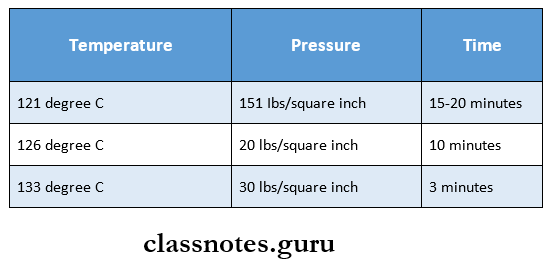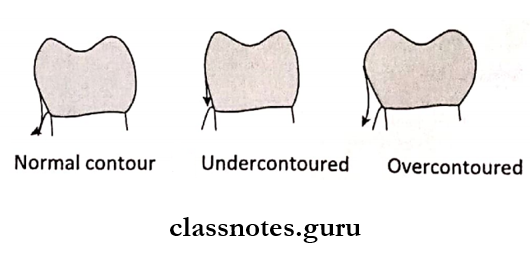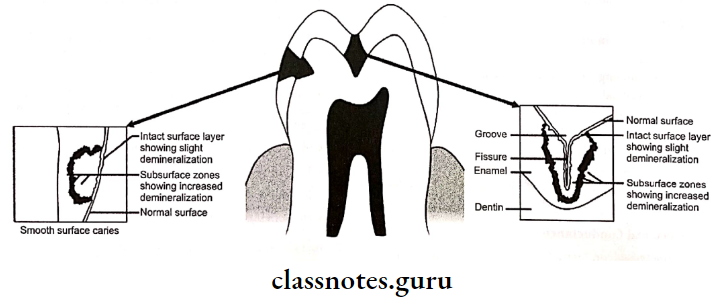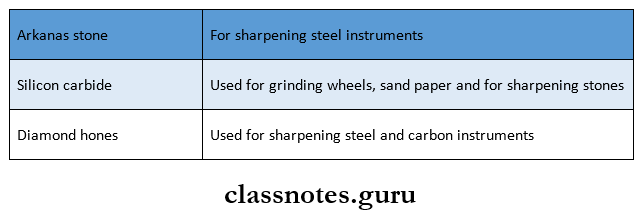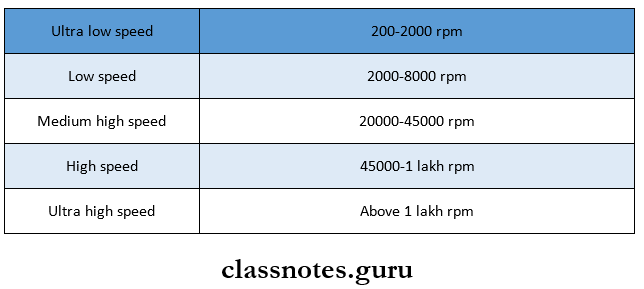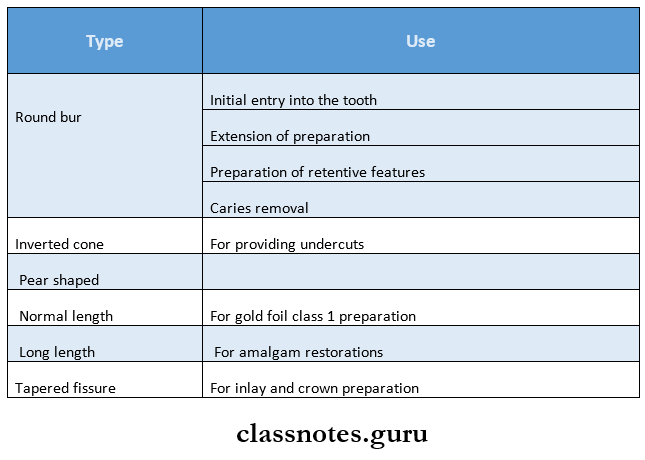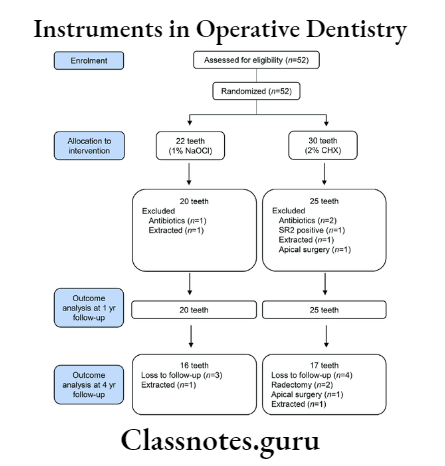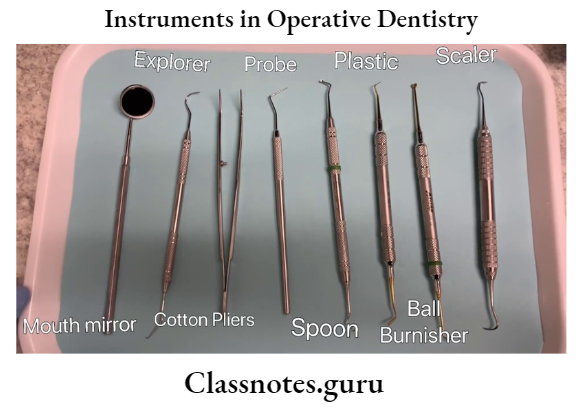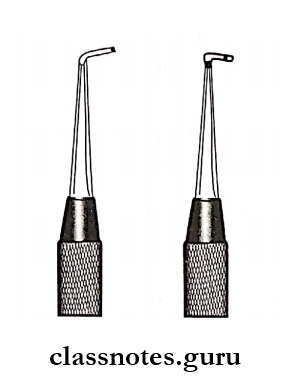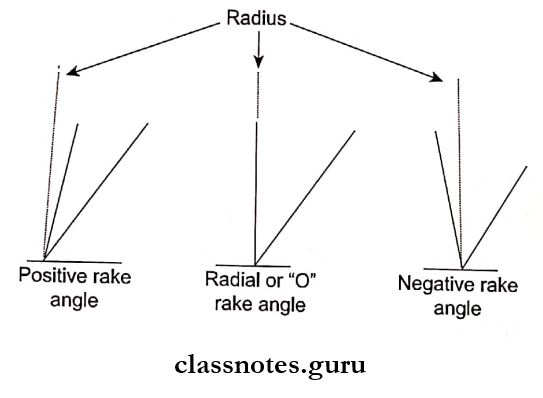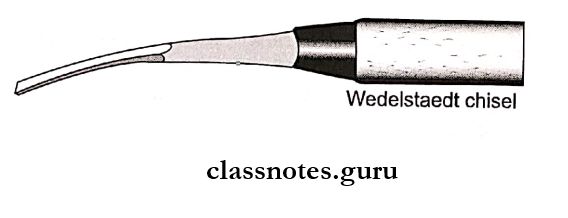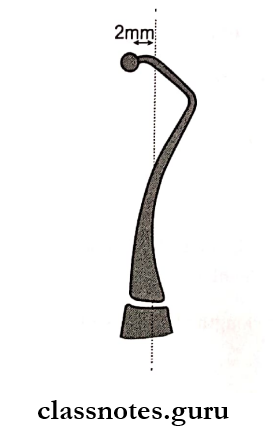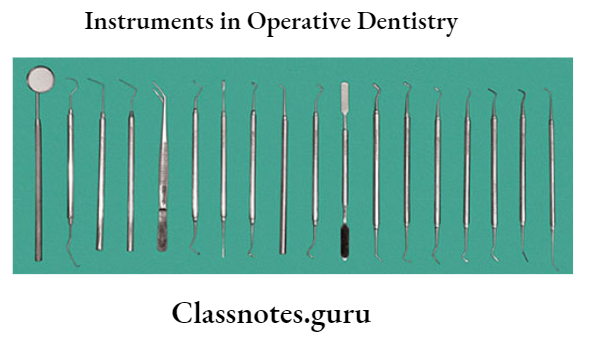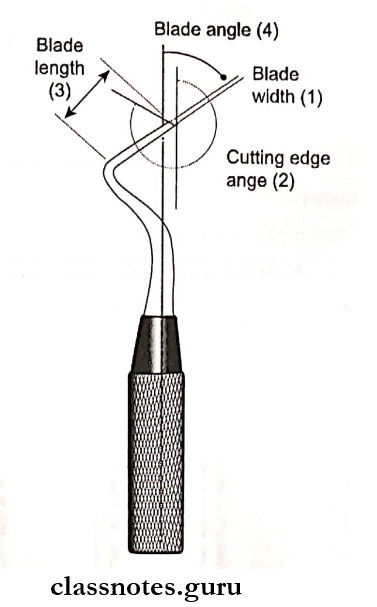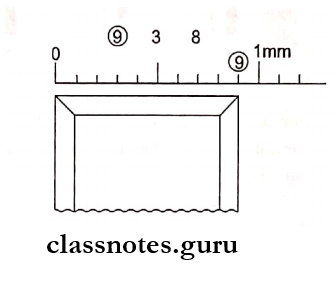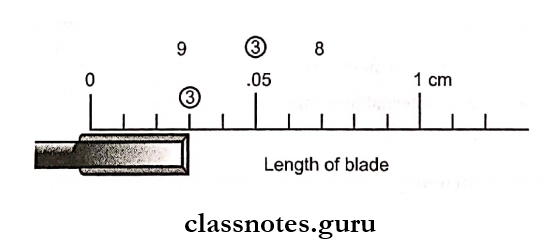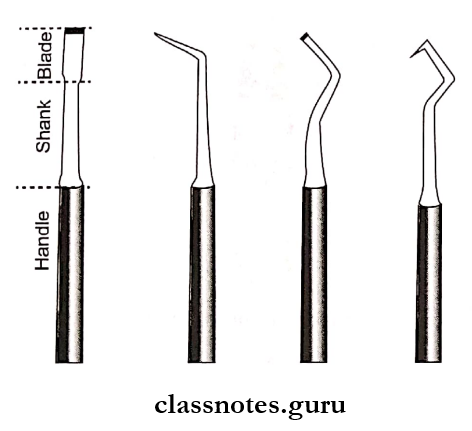Separation Important Notes
1. Types of separators
- Two Types
- Slow Separation
- The teeth are separated by inserting certain materials between them
- Rapid Separation
- Rapid separation is achieved by the wedge principle and traction principle
- Slow Separation
Read And Learn More: Operative Dentistry Question And Answers
2. Wedges
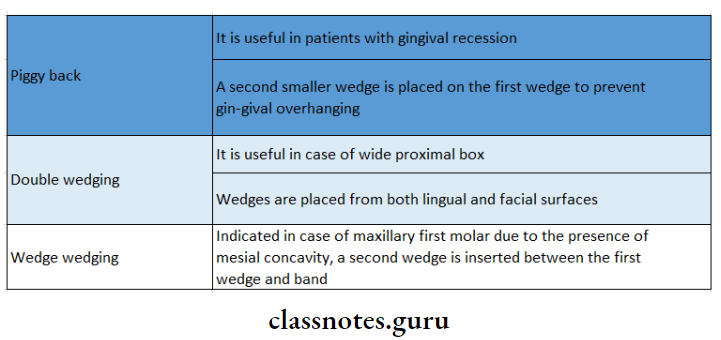
Separation Short Essays
Question 1. Separation of teeth / Tooth Separators / Indication of Separators.
Answer:
Separation of teeth / Tooth Separators / Indication of Separators:
Separation Of Teeth Definition:
Separation of teeth is the process of separating the involved teeth slightly away from each other or bringing them closer to each other and/or changing their spatial position in one/more dimension
Separation Of Teeth Purpose:
- Diagnosing the proximal caries
- Accessibility to proximal area
- Polishing of proximal restoration
- Matrix placement
- Removal of foreign bodies
- Repositioning shifted teeth
Separation Of Teeth Methods:
1. Slow/Delayed Separation:
- Rubber Ring/Band
- Orthodontic purpose
- Needs 2-3 days to 1 week
- Rubber Dam Sheet
- Heavy/extra-heavy type used
- Needs 1-24 hours/more
- Ligature Wire
- Separation in 2-3 days
- Oversized temporary crowns
- Fixed orthodontic appliances
2. Rapid/Immediate Separation:
- Traction Principle:
- Ferrier double bow
- Has 2 bows, each bow engages the proximal tact area of the tooth
- Use – Tooth preparation
- Finishing and polishing
- Wedge Principle:
- Elliot separator
- Wedges
Question 2. Wedges and Wedging methods.
Answer:
Wedges:
- Devices for rapid tooth separation
Wedges Functions:
- Rapid tooth separation
- Prevent overhanging restoration
- Stabilizes matrix band
- Gingival retraction
- Adapt/contour restoration in cervical areas
Wedges Types:
1. Wooden Wedges:
- Easily trimmed
- Shapes:
- Triangular
- Round
2. Plastic Wedges:
- Light transmitting wedge
- Used for composite restoration
- Size: Length of wedge 1-1.2 cm
Wedging Techniques:
1. Double Wedging:
- Two wedges are used
- One inserted from the buccal embrasure
- Other from the lingual embrasure

2. Wedge Wedging:
- Two Wedges Are Used:
- One inserted from the lingual embrasure
- Another Inserted between the first wedge and matrix band
- Indication
- The mesial aspect of maxillary first premolar due to the presence of flutes

3. Piggyback Wedging:
- Two Wedges Are Used:
- A larger one inserted from the lingual embrasure
- Smaller one is placed over it
- Use – Gingival recession
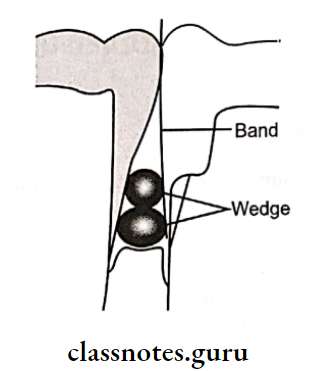
Separation Short Answers
Question 1. Elliot Separator.
Answer:
Elliot Separator:
- Synonym: Crab-claw separator
Elliot Separator Parts:
- Bow
- Two holding jaws
- Tightening screw
Elliot Separator Placement:
- Place the jaws gingival to the contact area
- Tighten the screw in a clockwise direction
Elliot Separator Precaution:
- Avoid tooth separation beyond the thickness of PDL i.e. 0. 2-0.5mm
Elliot Separator Uses:
- Diagnosis of proximal areas
- Polishing of proximal restoration
Separation Viva Voce
- Wedges are third component of the matrix system
- Wedges must be triangular or trapezoidal in cross-section
- The gingival aspect of the wedge may be lightly moistened with lubricant to facilitate its placement
- The tightness of the wedge is tested by pressing the tip of an explorer firmly at several points along the middle two-thirds of the gingival margins
- A triangular wedge is used for preparations with mar-gins deep in the gingival sulcus
- A round wedge is used for preparations with margins coronal to the gingival sulcus
- The wedge is kept as short as possible




